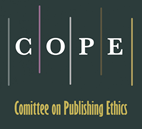How to Promote Transplantation in Pakistan and Establish Quality Centers
DOI:
https://doi.org/10.48111/2021.04.06Keywords:
kidney transplant, Quality Assurance, quality center, PakistanAbstract
IMPORTANCE Chronic kidney disease is a rapidly growing health care concern in Pakistan with limited capacity to be addressed due to poorly organized medical services. According to United Nations Population and World Bank, the Pakistan population is more than 220 million. Transplant program development will require extensive commitment and sacrifice. The biggest challenge will be to start performing deceased donor transplants and standardizing the existing living donor transplantation programs to improve outcomes. It is a daunting task but can be achieved with proper leadership and responsibility. There will be hurdles, setbacks, and delays, but these can be overcome with perseverance, focus, and hard work. Those who have been granted the opportunity to train at the highest levels abroad can participate and provide support for this noble cause.
References
Population: the numbers | Population Matters. Accessed November 10, 2021. https://populationmatters.org/population-numbers?gclid=Cj0KCQiA-K2MBhC-ARIsAMtLKRuaH0SZHb3PqVoF2aK4lfiJMH4sYRzH5bO8-9wtkIX4v3TQqLtglQ4aAkD_EALw_wcB
World Bank Open Data | Data. Accessed November 10, 2021. https://data.worldbank.org/
Pakistan Renal Data System. Accessed November 10, 2021. https://pkrds.com/faq.php
Rizvi SA, Anwar Naqvi SA. Saudi Journal of Kidney Diseases and Transplantation. Saudi J Kidney Dis Transplant. 1996;7(4):404. Accessed November 10, 2021. https://www.sjkdt.org/article.asp?issn=1319-2442;year=1996;volume=7;issue=4;spage=404;epage=408;aulast=Rizvi
Rizvi SAH, Manzoor K. Saudi Journal of Kidney Diseases and Transplantation. Saudi J Kidney Dis Transplant. 2002;13(3):376. Accessed November 10, 2021. https://www.sjkdt.org/article.asp?issn=1319-2442;year=2002;volume=13;issue=3;spage=376;epage=379;aulast=Rizvi
Jafar TH. The growing burden of chronic kidney disease in Pakistan. N Engl J Med. 2006;354(10):995-997. doi:10.1056/NEJMP058319
Home | USRDS. Accessed November 10, 2021. https://www.usrds.org/
Garcia-Garcia G, Jha V. CKD in disadvantaged populations. J Bras Nefrol. 2015;37(1):14-18. doi:10.5935/0101-2800.20150003
Sindh Institute of Urology and Transplantation. Accessed November 10, 2021. https://siut.org/index.php
Steering Committee of the Istanbul Summit. Organ trafficking and transplant tourism and commercialism: the Declaration of Istanbul. Lancet (London, England). 2008;372(9632):5-6. doi:10.1016/S0140-6736(08)60967-8
H Rizvi SA, Anwar Naqvi SA, Zafar MN, et al. Pakistan Abolishes Kidney Market and Ushers in a New Era of Ethical Transplantation. Int J Organ Transplant Med. 2010;1(4):193. Accessed November 10, 2021. /pmc/articles/PMC4089237/
Moazam F, Jafarey A. Pakistan’s experience with kidney transplantation and trade: a call for international solidarity. Indian J Med Ethics. 2014;11(3):156-162. doi:10.20529/IJME.2014.042
Shroff S. Challenges in setting up of a deceased donor transplant program in South Asia. Indian J Transplant. 2018;12(3):161. doi:10.4103/IJOT.IJOT_34_18
Rizvi SAH, Naqvi SAA, Zafar MN, et al. A renal transplantation model for developing countries. Am J Transplant. 2011;11(11):2302-2307. doi:10.1111/J.1600-6143.2011.03712.X
Rizvi SAH, Naqvi SAA, Zafar MN, Akhtar SF. A kidney transplantation model in a low-resource country: an experience from Pakistan. Kidney Int Suppl. 2013;3(2):236. doi:10.1038/KISUP.2013.22
Your access to this site has been limited by the site owner. Accessed November 10, 2021. https://unos.org/
Rizvi SAH, Naqvi SAA, Zafar MN, et al. Living related renal transplants with lifelong follow-up. A model for the developing world. Clin Nephrol. 2010;74 Suppl 1(SUPPL.1). doi:10.5414/CNP74S142
Downloads
Published
How to Cite
Issue
Section
License
Copyright (c) 2022 Irfan Saeed

This work is licensed under a Creative Commons Attribution-NonCommercial-NoDerivatives 4.0 International License.











